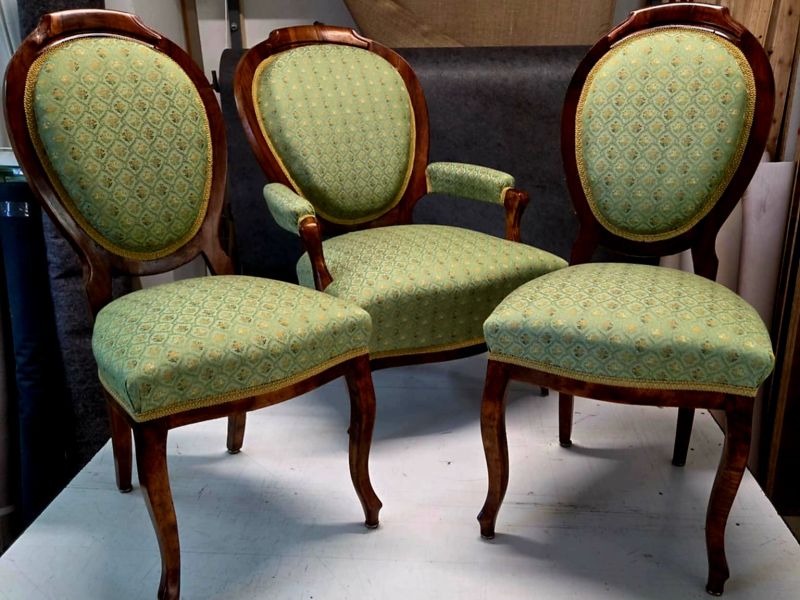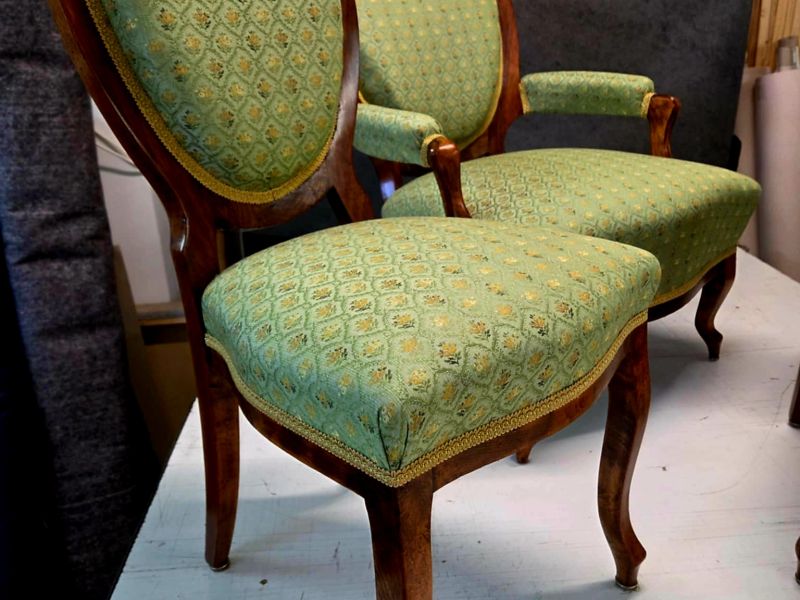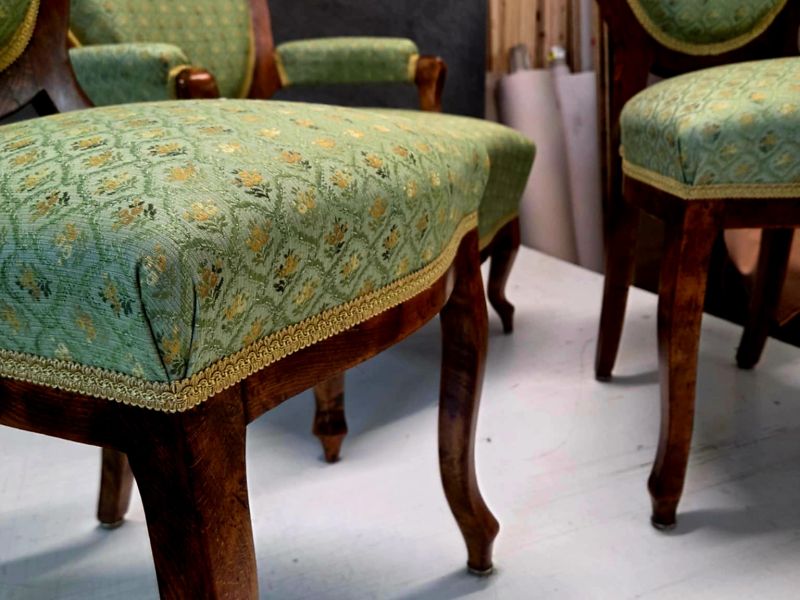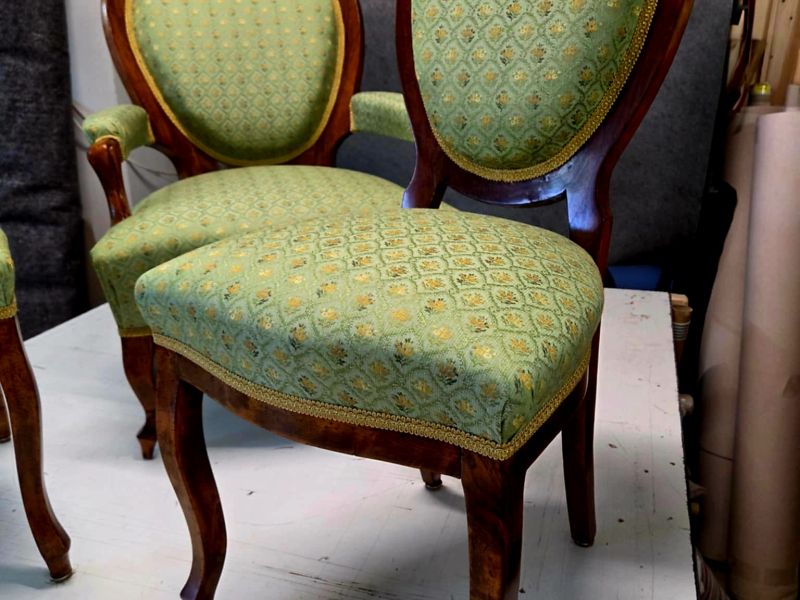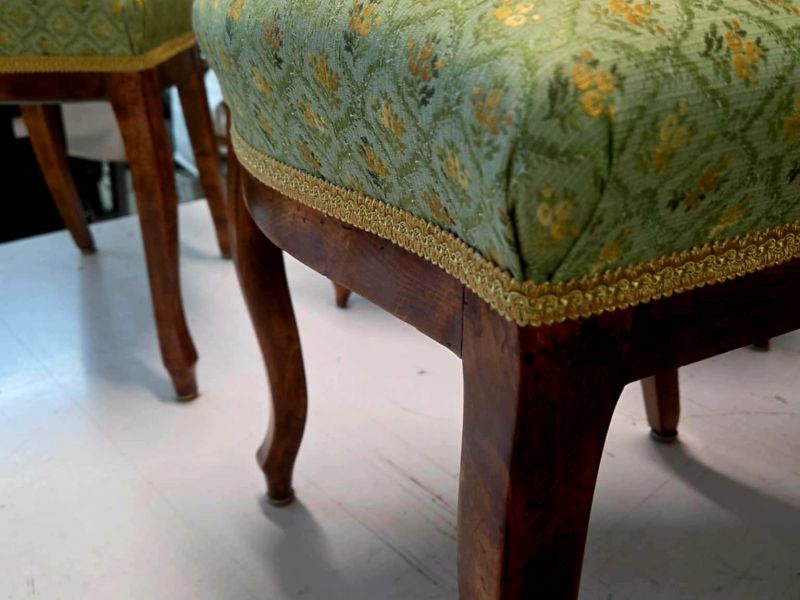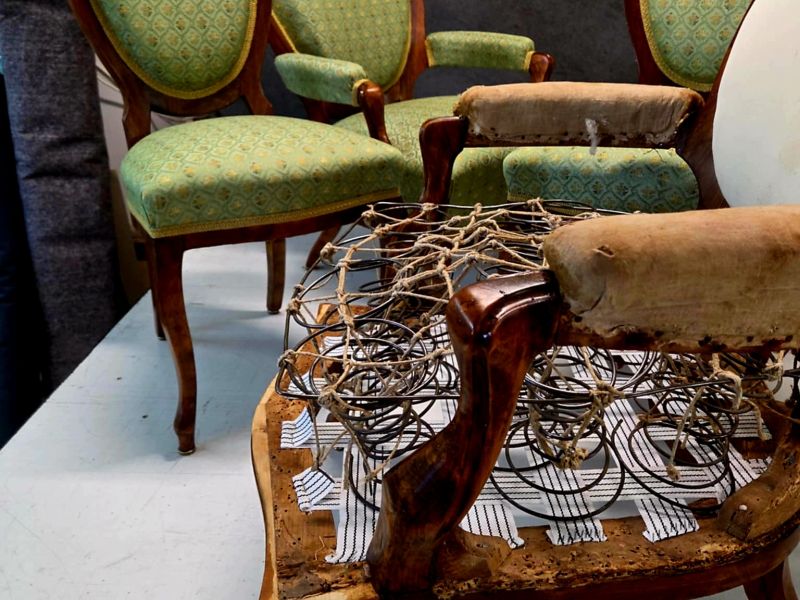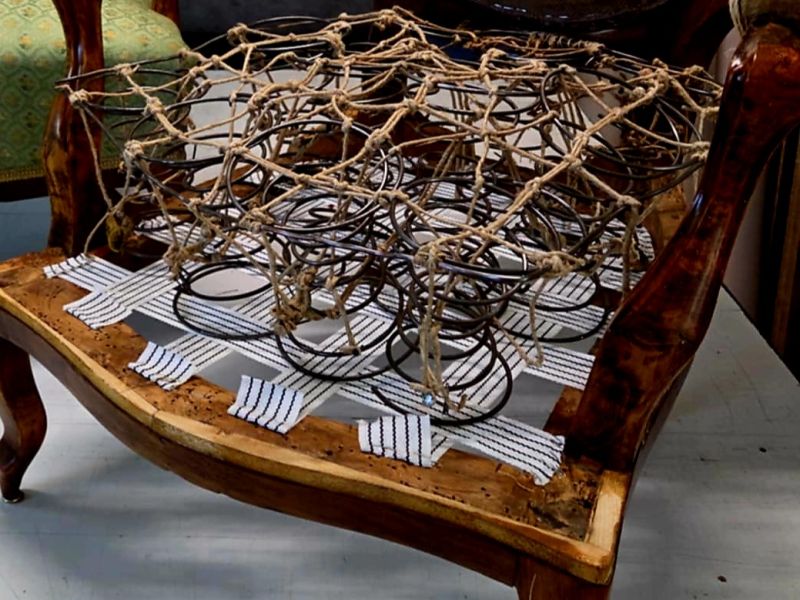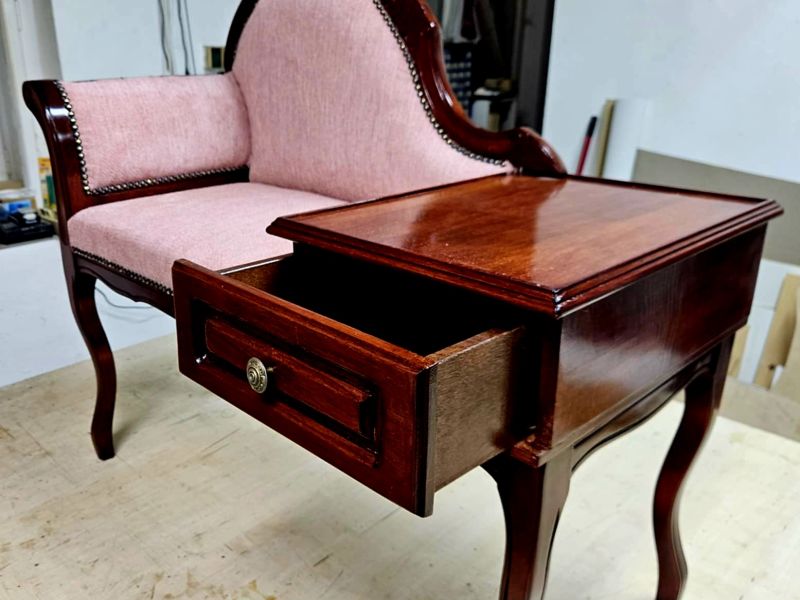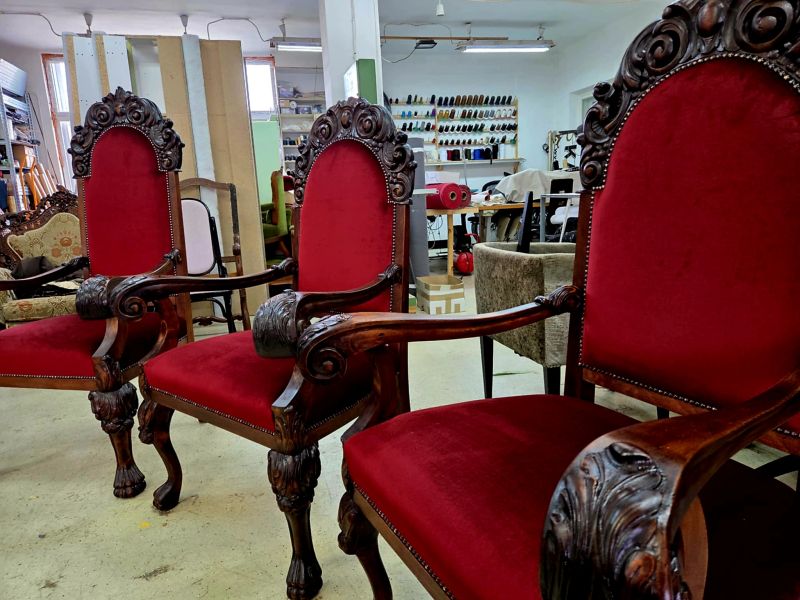In the history of furniture design, there are forms and details that are not merely decorative elements, but express the mindset and taste of an era. Such is the cabriole leg, which captures the elegance of movement carved into wood, and such is the geometric patterned upholstery, which weaves the aesthetics of order and harmony into everyday objects. These two motifs originated in different eras, yet they often appear together on the same chair or armchair, as if form and texture were engaged in a subtle dialogue.
The cabriole leg appeared in France in the early 18th century, during the Regency and early Rococo periods, roughly between 1715 and 1730. The word comes from the French term cabriole, which means to jump or leap – and this movement is also inherent in its form. The leg is convex at the knee and curved at the ankle, as if the furniture were about to dance. This type of curve evokes the beauty of movement, following the proportions and natural dynamism of the human body.
One of the first masters of this form was André-Charles Boulle, Louis XIV's court cabinetmaker, who started out with Baroque ornamentation but went on to create a more graceful, lively style. The cabriole leg quickly spread throughout Europe: in England, Thomas Chippendale perfected it, and it became a defining element of Queen Anne and Chippendale style furniture. By the end of the 18th century, with the advent of Classicism and later the Biedermeier period, the cabriole leg had been replaced by the straight leg.
By the end of the 18th century, with the advent of Classicism and later the Biedermeier period, the form became simpler. The decorations disappeared, but the curved lines evoking human movement remained.
The geometric fabric pattern representing order and harmony fits well with the legs, which convey the delicacy of movement. Their appearance on furniture upholstery became truly characteristic in the 18th and 19th centuries. The silk weavers of Lyon, France, perfected the technique of small repeating patterns, which decorated Rococo and Classicist furniture in the form of damask and brocade.
During the Biedermeier period, between 1815 and 1848, decoration became more restrained, colors became lighter, and patterns became more regular. Upholstery featured small rhombuses, squares, or stylized flowers repeated in a symmetrical order. During this period, geometric motifs were no longer merely decorative, but represented a worldview: the embodiment of rationality, moderation, and homely harmony.
The shape of the legs of this well-proportioned Biedermeier chair suggests movement and life, while the pattern of the fabric radiates order and stability. Today, as contemporary design rediscovers classic forms, these two motifs are once again relevant: the combination of curved wood and regular patterns continues to celebrate harmony and the elegance of movement.
My colleague reattached the wooden parts, replaced the missing veneers, and polished the surfaces. I upholstered the chairs and armchairs using traditional methods, covering the seats with the fabric chosen by my client.



